#the seashell is a Triton's trumpet
Explore tagged Tumblr posts
Text
The Reef and the Deep
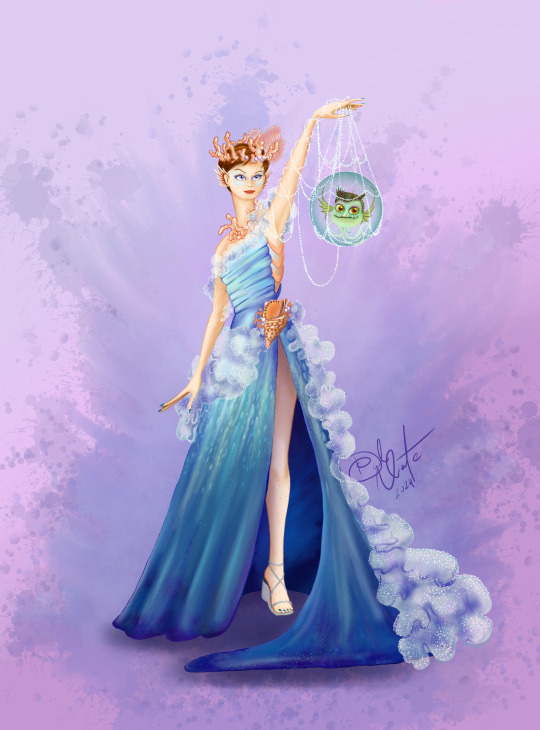
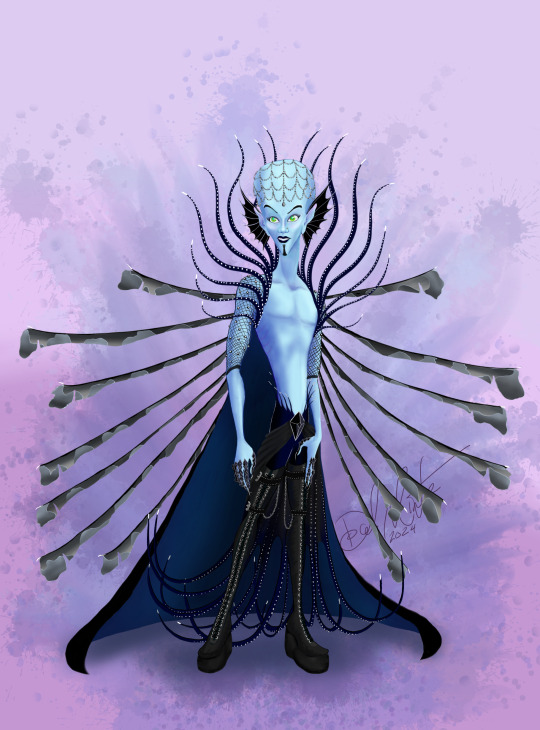
For @buginateacup's fic Haute Water, in which the trio goes to the Met Gala in Minion's designs. These were so much fun! I learned a lot!
Image descriptions: Roxanne and Minion and Megamind in extremely fancy outfits.
Roxanne's dress is cut sharply up the thigh and looks like a wave rolling in - sleeveless, strapless, it has a bustled train of tulle scattered with seed pearls and a waist gather with a seashell and corals. The top of the bodice also has the same seafoam tulle, which wraps around Roxanne's arms. She is wearing a necklace and crown of coral and has iridescent blue highlights on her face. She is holding Minion aloft in a net of pearls. Minion looks extremely pleased with himself and is wearing pink eyeshadow.
Megamind is wearing ink-black and very sharp fins on his ears, a net of black pearls on his head. He has spines of very dark blue rising from his shoulders and arms, and similar spines falling in a narrow overskirt from his waist. He has lionfish-fin spines framing the sides of his cape, which is very dark blue inside and black outside. He has no shirt, but is wearing fishnet sleeves with scattered black pearls, and black armor on the backs of his hands and fingers. His boots are laced all the way up his thighs.
Both are on a pinkish-lavender background with a faded splash effect behind them.
#megamind#megamind fanart#megamind fanfic#please stroke my ego lol these are by far the most ambitious pieces i've ever attempted#updated to add image descriptions#dal is a fanart#dal draws#megamind rules#megamind vs the doom syndicate#the seashell is a Triton's trumpet#Charonia tritonis#they are one of the few predators of the crown of thorns starfish#which is becoming a major problem on the great barrier reef#these snails can reach up to two feet in length and have pretty stripy eyestalks#and a lovely mottled body#met gala
82 notes
·
View notes
Text
🧜🏾♂️Subtle Triton Worship 🐚
Blow into a conch shell, especially when by the ocean or a body of water
Clean up trash by the ocean shore or any body of water
Go swimming, especially in the ocean; play pool games
Go diving (Safely, please)
Get a candle that reminds you of him; no altar needed
Wear jewelry that reminds you of him
Keep a picture of him in your wallet
Help any beached sea creature you stumble across (Or any fish that wash up on a lake and are alive)
Learn about the invasive species in any bodies of water in your area; advocate for their removal, and remove them if you come across any (And are able to do so safely)
Collect any seashells or pretty stones you come across near water
Have a fish, dolphin, horse, or crab stuffed animal
Have imagery of the ocean (especially the deep sea), conch shells, tridents, sea creatures/plants, and merfolk (especially those with two tails or dolphin tails) around
Try eating seafood or seaweed (Be aware that many people are often allergic to shellfish!!! Shrimp, crabs, lobsters, etc.)
Keep a pet fish or water dwelling creature; be sure to research the animal first to ensure quality of life under your care
Stay hydrated; drink lots of water throughout the day
Drink warm water with honey stirred in
Donate to or support ocean/river/lake-focused organizations or animal shelters
Learn about the deep sea marine life; learn about any form of marine life
Go sailing, paddle boarding, kayaking, etc. (Safely)
If you don't know how to swim, take swimming lessons or have someone teach you; always wear a lifejacket or floaties for your safety, until you feel comfortable with your skill
Practice asserting yourself and standing your ground; do your best to assert your personal boundaries; take time to learn what your boundaries are if you aren't sure
Take a warm shower/bath when you feel overwhelmed; use the water to cleanse and relax you
Leave a glass of water on your windowsill for the night or day; either replace or drink it after a few hours (you don't need to have water there constantly, it's just a once in a while thing)
Keep a jar of seaglass; make art from it or simply put it in the light, it'll look great either way
Collect ethically sourced shark teeth; collect ethically sourced fossils of ocean creatures
Learn to play the trumpet, trombone, French horn, or other brass instrument
Embrace your inner strength; celebrate how far you've come and how resilient you are
Ground yourself near a body of water, particularly the ocean; allow yourself to be one with the waves or subtle ripples of water; match your breath to the tide if you can
Fall asleep/meditate to the sound of ocean waves or sea creatures
Wash your hands/face with salt water
Dance/sing to music that makes you feel empowered or badass
-
This one was definitely tough because I struggled to find historical accounts of Triton being worshipped. Typically, I can draw some ideas from that if I'm not familiar with a deity, but Triton didn't have many records of worship, despite being widely accepted as Poseidon and Amphitrite's son. He was mostly known as Poseidon's herald, and in some accounts, he was even Athena's foster parent, yet there is still such little information about him to be found.
At least for now, this is my list of discreet ways to worship Triton. I hope to be able to add more in the future, and I hope that it's still helpful to people as is. Take care, y'all, and chill with the waves. 💚
Link to Subtle Worship Master list
#helpol#hellenic polytheism#hellenic pagan#triton deity#triton#triton worship#deity worship#paganblr#ocean deities#paid for by a generous donor 💚
68 notes
·
View notes
Text
Greek Gods 101: Triton
Triton is a god of waves and the stilling of water. Excluding the universal offerings, some common offerings include:
Conch Shells
Trumpets (Or Depictions of Them)
Salt and Salt Water
Depictions of Dolphins
Depictions of Crabs
Depictions of Horses
Seaweed
Seashells
Depictions of Mermen or Mermen Tails
Sand
Depictions of Sea Foam
For devotional acts, some activities that can be done for him include:
Taking Care of Local Water Sources
Learning About Tides
Learning How to Sail (or Sailing)
Swimming
Volunteer at Marine Biology/Conservation Associations
Fishing
Learning How to Tie Knots
Visiting (Ethical!!!) Aquariums
He is not celebrated in any Athenian holidays.
#triton#triton god#triton deity#deities#hellenism#helpol#hellenic#hellenic pagan#hellenic polytheism#hellenic polytheist#hellenic community#hellenic deities
36 notes
·
View notes
Text
What is a shell?
A shell is a hard outer layer, which has evolved in a very wide variety of different animals, including molluscs, sea urchins, crustaceans, turtles and tortoises, armadillos, etc.
Mollusks
Most of the seashells we know are part of a classification of animals collectively called “mollusks.” Clams, mussels and the triton or trumpet shell are just some of the invertebrates that belong to the phylum Mollusca. These are creatures without any backbones that have proportioned bodies containing a head, visceral hump, mantle and foot. In most mollusks, hard shells are mounted on the visceral hump and house their internal organs. The mantle secretes a sheet of tissue made of calcium carbonate and other minerals that eventually becomes the shell during the mollusks' developmental process. Crustaceans
Crustaceans are considered the biggest collection of marine arthropods—or animals with segmentation. Lobsters, crabs, and shrimps are just some of the creatures that make up the approximately 30,000 species of crustaceans. All crustaceans have an external shell made of calcium and a protein called “chitin.” The outer shell serves as protection and firm support for the muscle-attachments or joints, which allows crustaceans to move. Turtles and Tortoises
Turtles and tortoises are some of the best-known shell-dwelling creatures. The difference between them is that tortoises live on land while turtles prefer the water. Compared with the shells of mollusks and crustaceans, turtle and tortoise shells are part of their hosts endoskeletons and are actually composed of living cells, nerves and blood vessels. The shell surfaces are considered epidermal structures made of the protein keratin. The exoskeletons are made of calcium phosphate and, just like human bones, are constantly growing. Sea Urchins
A sea urchin’s shell is also known as a "test." The male shells have an attractive symmetrical design that serves as a tool for attracting females. The rigid shell is made of flat, connected calcareous ossicles, which split into 10 sections. Among these sections are five ambulacral plates, which have pierced holes where the tube feet stick out. The remaining plates without holes are called “interambulacral” areas. Armadillos
Armadillos, which are related to anteaters and sloths, don't exactly have shells, but the bony plates that cover their backs, heads and and tail provide the same protection. Armadillos are the only mammals with such bony carapaces, and the structure of their shells is unique, even among reptiles and other creatures. One subspecies, the three-banded armadillo, can curl itself up inside its outer covering as a protection against predators. Armadillos live mostly in warm climates and can die during periods of unseasonably cold temperatures.
0 notes
Photo
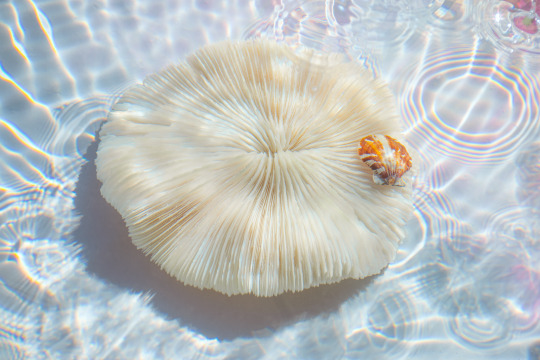
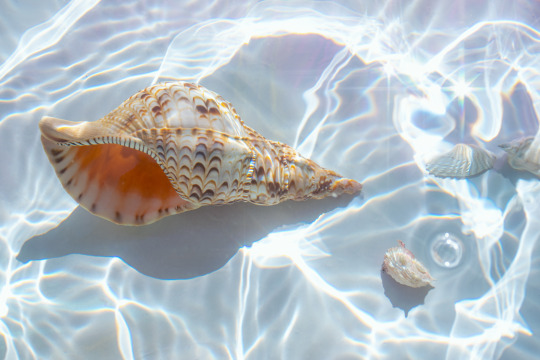
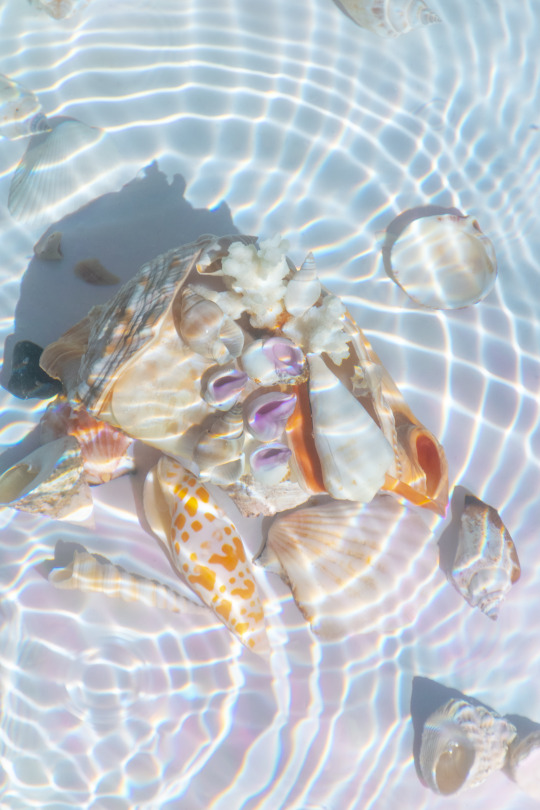
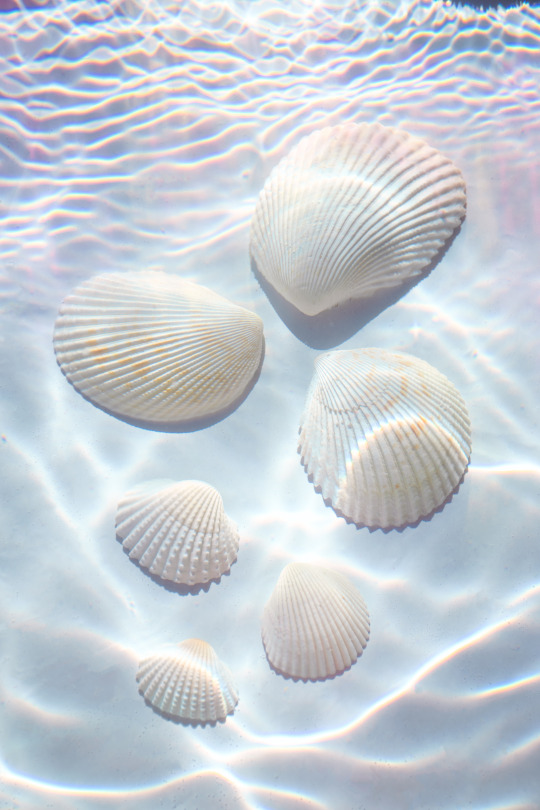
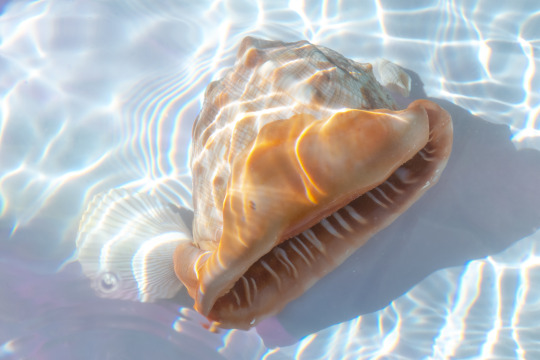
#seashells#triton's trumpet#charonia tritonis#shell#conch#seashell#water#water texture#Aesthetic#summer aesthetic#Blue Aesthetic#sea#ocean#coral#mushroom coral#water drops#sea aesthetic#photography#photoshoot#photographers on tumblr#still life photography#Summer#underwater#sunny#mermaidcore#mermaid#beach#beach aesthetic#shells#the little mermaid
240 notes
·
View notes
Text
PACIFIC TRITON 310mm Large Sea Snail Shell Seashell Charonia Trumpet Asian Art Home Deco #1

Shell Seashell, Pacific Triton Trumpet. These shells are able to produce sound loud enough to be heard 3 kilometers away! The volume depends on the way u blow it rather then how big your breathing capacity is. Length: 31 cm / 12.2 inches Width: 14 cm / 5.5 inches Weight: 0.5 kg / 1.1 lb After packing: 1.5 kg / 3.3 lb I will ship via Registered Mail, 14 working days worldwide. Insured. Shipping worldwide $40. Read the full article
2 notes
·
View notes
Text
Types of Seashells
What is a seashell?
A seashell is usually found on the shore by the ocean. It's a form of marine life that has been around for millions of years.
Seashells are also known as mollusks, invertebrates with shells to protect them from predators and keep their soft bodies safe inside.
1. What are the different types of seashells?
Many different types of seashells are there in Floridian waters. Although it may not seem like much to an untrained eye, many seashell species call these waters home.
Here are some types of Florida shells:
Florida fighting conch:
The shell itself tends to vary in color from pale pink or yellow tones, and its surface has a jagged pattern visible across its surface.
The shape of this shell is like a cone, and it is of moderate size. Some people may mistake these types of shells for the more common Trumpet Triton, which has very similar coloring at first glance.

Another type of Florida seashell that is relatively easy to find on local beaches is:
Sand dollar:
This Seashell has a round, flat surface, and it tends to be white or brown. If the sand dollar is broken open, you'll find small star-shaped markings on its inner surface.
The sand dollar does tend to resemble other types of seashells, such as sea urchins and sea biscuits, but if you can locate one that's still intact, it is easy to identify.
Saw-toothed periwinkle seashell:
This particular species has a brown exterior with a dark gray interior, and it looks like an oblong tube that's slightly curved at both ends.
The saw-toothed periwinkle is a prevalent type of Seashell used in making jewelry and other ornamental accessories.
The lightning whelk:
The lightning whelk is a predatory sea snail found on rocky shores.
Venus clam:
Venus Clams can grow up to be five inches long and one inch wide, but most average between two and three inches in length.
Venus Clams live their whole lives in the sand and mud right on the ocean floor, where they feed off plankton and other types of microscopic sea life that also live in this area.
They have a hard shell that protects them from predators such as crabs, lobsters, or sharks.
Venus clam and the lightning whelk are the types of claims commonly harvested for their meat, which can be prepared in various delicious ways.
2. How to identify a shell?
Seashell identification is not complicated because it only requires looking at the Seashell. Seashells are a beautiful and unique part of the ocean. Here's how you can easily distinguish between different species:
All seashells should be smooth and glossy on one side, rough or dull on the other. They're made mostly of calcium carbonate, which is what makes them so beautiful.
youtube
Even more fascinating is that each shell has its unique markings, making it easy for Florida shell identification. You'll want to look for patterns in the shell as well- these will help you find out what type it is.
The ocean is a place of beauty and peace, but it can also be an unforgiving force. For centuries, people have found solace in the shells that wash up onshore.
From these humble beginnings grew what we now call seashells-the beautiful objects created by nature to offer protection from the elements.
Hop over to this website for getting more information related to Scaphella Junonia.
Find Us On Google Map: ( Sand Dollar Shelling )
1 note
·
View note
Text
Amphitrite
In Greek Mythology, Amphitrite is the Queen-goddess and female personification of the Mediterranean Sea. She is sometimes referred to as the “loud-moaning goddess of the Sea,” and at other times as the goddess of the golden spindle. Amphitrite is often listed as one of the Nereids, the nymph daughters of the Sea-god Nereus, but at other times is listed as one of the Oceanids. Sometimes, she is listed among both classes. Amphitrite is usually depicted as a beautiful maiden holding a fish or a golden spindle and sometimes making a pinching gesture with her hands. She is usually seen wearing traditional Greek garb or partially nude. Sometimes she is seen wearing her hair in a fishing net or with her brow adorned with crab claws. Amphitrite is also usually seen alongside her husband, Poseidon, in a fish-tailed horse driven chariot. Amphitrite’s name is most likely derived from the Greek words amphis and tris, which translates as “the surrounding third.” Although the reason behind the origin of her name is obscure, it’s probable that the meaning of the third in her name referrers to the Sea. Amphitrite became the Queen of the Sea when Poseidon saw her and her nymph sisters dancing on the island of Naxos. Upon falling in love with her, Poseidon asked for her hand in marriage. Amphitrite, wanting to remain a virgin, refused Poseidon’s proposal and fled to hide near the Atlas Mountains. Poseidon sent his dolphin messenger, Delphinus, to find and retrieve Amphitrite and convince her to become his Queen. Amphitrite afterwards accepted Poseidon’s marriage proposal, and for his service, Poseidon placed Delphinus among the stars as the dolphin constellation, Delphinus. Associations: dolphins, shellfish, crabs, dancing, singing, and spinning. Family Nereus – Amphitrite’s father; Referred to as, ‘The Old Man of the Sea,’ is a god of the Sea’s bounty. Doris – Amphitrite’s mother; One of the Oceanids. The Nereids – Amphitrite’s sisters; A class of fifty (or 100) Sea-nymphs who are the patrons of sailors and fishermen who aided mortals against perilous storms. The most well known Nereids are Amphitrite, Thetis, and Galatea. Nerites – Amphitrite’s brother; A handsome young Sea god who was transformed into a shellfish by the gods. Poseidon – Amphitrite’s husband; The Olympian god and King of the Seas. Triton – Amphitrite’s son; A fish-tailed minor god of the Seas who stilled the waves with the blow of his conch-shell trumpet. Rhode – Amphitrite’s daugther; A sea nymph. Kymopoleia – Amphtrite’s daughter; A sea nymph and goddess of the violent storm waves. Benthesikyme – Amphitrite’s daughter; A sea nymph and goddess of the waves. Titles & Epithets Agastonos – Loud Moaning Halosydne – Sea born Khryselakatos – Of Golden Spindle Kyanopis – Blue, -Dark eyed. Offerings Below is a short list of offerings that correspond to Amphitrite. Anything sea-related is usually suitable to be used as an offering. Since I am landlocked and my sea-related tools are limited, I prefer to make seashell candles with blue wax to serve as offerings to her. Seashells (particularly mussel shells) Crab claws Sea glass Fishing nets Ocean themed candles, incense, fragrance oils – etc. Praying, spinning, singing, and dancing. Taken from https://seasorceress.wordpress.com
2 notes
·
View notes
Photo

In the tide 3 by rolfnoe , Editor's Choice 500px
0 notes
Photo

In the tide 3 by rolfnoe http://bit.ly/2r6mgw9
#marine#seashell#pacific islander#triton trumpet shell#manganese#seacoast#coastland#midsummer#schel#f
0 notes
Photo

Editor's Choice Title: In the tide 3 Artist: rolfnoe ( https://ift.tt/2E0mIEQ ) Uploaded Date: November 27, 2018 at 01:59AM Description: fragment of sea life
0 notes
Photo

In the tide 3 by rolfnoe
0 notes
Photo

In the tide 3 by rolfnoe
0 notes
Photo

Spiral, dead snail in a fennel by bygus http://ift.tt/2E6DIFU #macro
#snail#cephalopod#seashell#nautilus#gastropod#shellfish#conch#sea horse#mollusk#whelk#triton trumpet
0 notes
Photo

This seashell has a very unique name. It's called Triton's Trumpet. Somehow it reminds me of a trumpet in a way. Hahaha. #tritontrumpet #trumpetlookalike #trumpet #lookalike #seashell #seashells #macro #photography #macrophotography #leekongchiannaturalhistorymuseum #singapore
#macro#trumpetlookalike#lookalike#singapore#tritontrumpet#photography#macrophotography#seashell#seashells#trumpet#leekongchiannaturalhistorymuseum
0 notes
Text
PACIFIC TRITON (0.99 Pound) Large Sea Snail Seashell Charonia Trumpet Asia Home Deco #2

PACIFIC TRITON seashell. The volume depends on the way u blow it rather then how big your breathing capacity is. Length: 31 cm / 12.2 inches Width: 12.5 cm / 4.9 inches Weight: 0.45 kg / 0.99 lb Wikipedia: Charonia tritonis, common name the Triton's trumpet or the giant triton seashell, is a species of very large sea snail, a marine gastropod mollusc in the family Charoniidae, the tritons. Reaching up to two feet (or 60 cm) in shell length this is one of the biggest mollusks in the coral reef. C. tritonis is one of the few animals to feed on the crown-of-thorns starfish, Acanthaster planci. Occasional plagues of this large and destructive starfish have killed extensive areas of coral on the Great Barrier Reef of Australia and the western Pacific reefs. The triton has been described as tearing the starfish to pieces with its file-like radula. After packing: 1.5 kg / 3.3 lb I will ship via Registered Mail, 14 working days worldwide. Insured. Shipping worldwide $40. Read the full article
2 notes
·
View notes